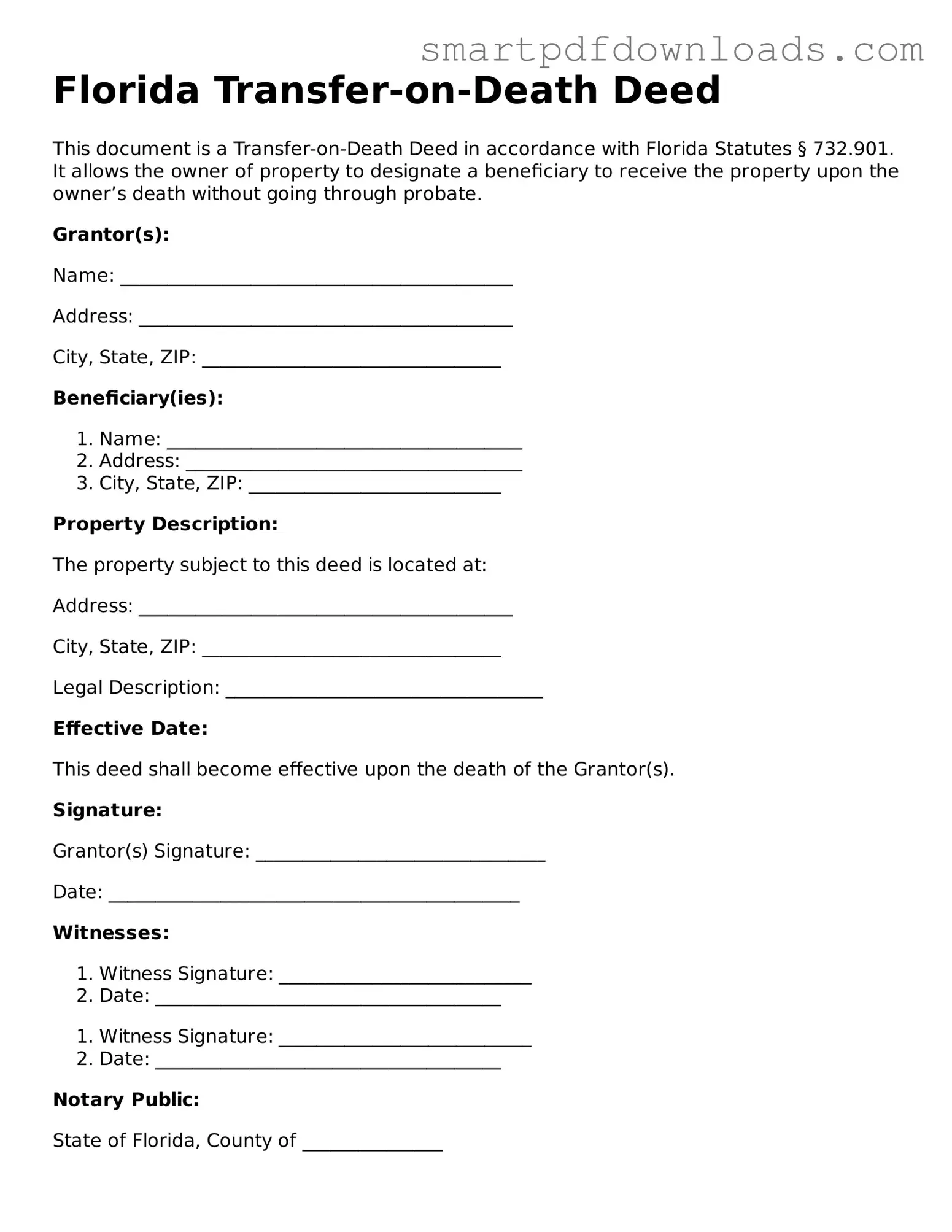Florida Transfer-on-Death Deed
This document is a Transfer-on-Death Deed in accordance with Florida Statutes § 732.901. It allows the owner of property to designate a beneficiary to receive the property upon the owner’s death without going through probate.
Grantor(s):
Name: __________________________________________
Address: ________________________________________
City, State, ZIP: ________________________________
Beneficiary(ies):
- Name: ______________________________________
- Address: ____________________________________
- City, State, ZIP: ___________________________
Property Description:
The property subject to this deed is located at:
Address: ________________________________________
City, State, ZIP: ________________________________
Legal Description: __________________________________
Effective Date:
This deed shall become effective upon the death of the Grantor(s).
Signature:
Grantor(s) Signature: _______________________________
Date: ____________________________________________
Witnesses:
- Witness Signature: ___________________________
- Date: _____________________________________
- Witness Signature: ___________________________
- Date: _____________________________________
Notary Public:
State of Florida, County of _______________
Subscribed and sworn before me on this ______ day of ____________, 20__.
Notary Signature: _______________________________
My Commission Expires: _______________________
This Transfer-on-Death Deed, when properly executed and recorded, will facilitate the smooth transition of property ownership without the necessity of probate administration.
